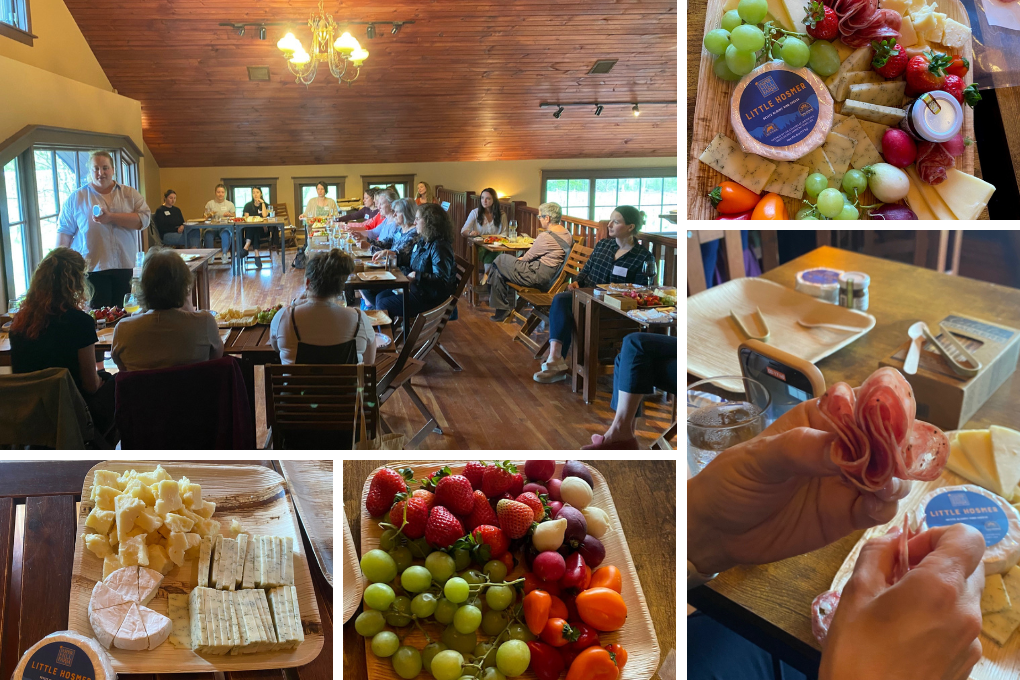
In May, I joined 24 dietitians from Vermont Academy of Nutrition and Dietetics at Shelburne Vineyard for a fun evening of charcuterie board building led by American Cheese Society certified cheese professional Taryn Ruf.
Taryn shared insights on how to make the perfect charcuterie board. From balancing textures to selecting the best ingredients and attractively arranging them, attendees gained valuable tips and tricks to elevate their charcuterie board game. Each attendee was supplied with a selection of cheese, meats, vegetables, fruits, and accompaniments and was guided step by step on how to craft their own custom board. Below is how mine came out.

Many attendees left the class feeling empowered to recreate a stunning and delicious charcuterie board using the tips and tricks learned from class. I hope sharing takeaways from this experience will inspire even more people to get creative with charcuterie and boost their confidence in building a board.

Key Takeaways:
1. Variety is Key
Include an assortment of cured meats such as prosciutto, salami, and chorizo, paired with an array of cheeses spanning from hard to soft to bold flavors such as Sharp Cheddar, Brie, Gorgonzola, and Pepper Jack. Add a variety of accompaniments like olives, pickles, mustards, and jams to complement the flavors of the meats and cheeses.
2. Balance Flavors and Textures
Aim to include a mix of salty, savory, sweet, and tangy elements. Add some crunchy components like crackers and nuts, as well as sweet items like fresh or dried fruits and honey to balance out the savory flavors. Fresh fruits such as grapes, strawberries, and apple slices bring some sweetness and are a great complement to cheese.
3. Play Around with Presentation
Arrange items in a visually appealing manner, alternating between meats, cheeses, and accompaniments to create balance. The biggest items on your board should be the focal points and should go on first. Start with cheese, follow with meats, then crackers, and finally any bowls or cups. When deciding where to place each element, try to position contrasting items next to each other. Finish by adding the smallest accompaniments, using them to fill in any empty spaces.
4. Get Creative with Textures and Heights
Fold meats into intricate shapes, stack cheeses, and incorporate decorative garnishes such as fresh herbs for added color and contrast.
5. Take Advantage of Seasonal Produce and Locally Sourced Ingredients
Incorporating seasonal fruits, vegetables, and artisanal products not only enhances the freshness and quality, but also supports local farmers and producers
As the evening came to a close, we gathered around to share our personal charcuterie creations which we all got to take home. Yeah, to wooden trays with lids!




